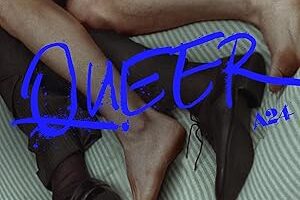Tropic Sprockets
Birdman
KONK LIFE STAFF WRITER
The eccentric and semi-reclusive actor Michael Keaton gives a breakthrough performance as the one-time action star Riggan Thomson in Alajandro Gonzalez Inarritu’s “Birdman.” Riggan is a mainstream actor, attempting a Broadway run, with his adaptation of Raymond Carver’s fiction. Thomson is driven dyspeptic and ulcerated by low self esteem.
Perhaps as a joking commentary of Keaton’s own role as The Batman, Riggan attempts to dismiss his Pop history while at the same time wanting to protect his legacy. The actor is surrounded by mediocrity, from the egocentric method actor (Edward Norton) to his slacker daughter (Emma Stone) and his hen-pecking ex girl (Andrea Riseborough) and feels stifled.
Enclosed within the corridors of the shabby but time honored theater, Riggan is a Minotaur lost in a maze. While the dialogue feels intentionally long winded and circular, Keaton is transformative as an acidic and fuming big bad wolf trapped in the exhausting fairy tale that is his life.
The acting is stellar, but where the film really succeeds is in its magical realism as menacing buildings threaten to overtake him, echoing the fantasies of Terry Gilliam. Riddled with self doubt, Riggan nonetheless has the aggressive yet fanciful ability of telekinesis, hurling objects against the wall in menace.
It is possible in watching the film to dispense with the plot, and just let the kaleidoscopic verve of the Hitchcockian cinematography by Emmanuel Lubezki absorb your eye. Shot in one continuous take throughout the two hours, Lubezki shows us an inferno of Broadway, peopled with pale and eerie creatures reminiscent of Hieronomous Bosch.
The final piece d’resistance of “Birdman” is in giving Riggan something of the great Antonin Artaud in making the theater a violent and propulsive act. Like a cartoony and surreal shaman, Riggan executes a Taoist pantomime, highlighting a double world that exists within our routine shadow play. Whiplash Director Damien Chazelle (Guy and Madeline on a Park Bench) has given us a spellbinding quasi-autobiography with “Whiplash,” zeroing in on a young music student with heart, intensity and a squeamish sense of detail.
Whiplash
Director Damien Chazelle (Guy and Madeline on a Park Bench) has given us a spellbinding quasi-autobiography with “Whiplash,” zeroing in on a young music student with heart, intensity and a squeamish sense of detail.
Andrew (Miles Teller) is enrolled as a jazz drummer at a prestigious New York school. His footsteps are hesitant and half hearted. Like Franz Kafka he is pale and timidly-toned, invariably looking over his shoulder, for the aggressive onslaught of sheet music that attack his eyes like a family of bats. Andrew is small and hunched despite his muscular form.
The camera is often low to the ground. Andrew sees flies buzz about. Shiny saxophones and trumpets seem like lusty monsters that exhale asthmatically, needy and selfish. The soundproof walls transform into sheets of medieval iron. With these microscopic details that singularly make the film, we have echoes of Darren Aronofsky’s “Black Swan.”
The terrified and drooling Andrew crosses paths with the snarling and militant Fletcher (J.K. Simmons). Fletcher makes “Bad Santa” into Mister Rogers. He is uncompromising, violent and frenetically scary. He would be right at home in “Apocalypse Now.” An earnest and diligent pupil is no match for the beast that is Fletcher who just misses being dressed in the smoke of satan.
Enduring insult after insult to the point of collapse, Andrew drums on, sweating and puffy like a refugee from war. In a few brilliant strokes like an angry Expressionist painting there are gobs of blood on cymbals. The student tapes his hands like Jake LaMotta before a fight. Andrew becomes a machine to the point of callously dismissing his girlfriend Nicole (Melissa Benoist).
As tense as this story is, there are moments of beauty. The drum set is as much of a sorcerer’s conjuring box that pulses with valentine life as it is something to be feared and conquered. The music itself is a force in this film which features Hank Levy’s Whiplash and Ellington’s Caravan. While it at times flirts with a malevolent toxicity and harshness that is very nearly grotesque, this is J.K. Simmons’s best film to date. Just when you think Fletcher is about to grow permanent horns, he backs away and becomes human.
Andrew, too, is very, very vulnerable with a kind of Black Majick within as he becomes an absolute Judge Dredd of drumming, bloody and deliberate. While such scenes veer into acidic comedy in the tradition of the gore soaked Amy in the recent “Gone Girl,” with the kid just short of leaving his skin by his drum box, the moments of Andrew leaving an empty and dim hall, his shoulders whittled down in exhaustion recall the solitary of Edward Hopper or a painting of the ashcan school. These painterly moments of melancholy and heroic motion is reason enough to guard your neck and see “Whiplash,” despite a Grand Guignol shade of Buddy Rich.
Write Ian at [email protected]
[livemarket market_name="KONK Life LiveMarket" limit=3 category=“” show_signup=0 show_more=0]




No Comment